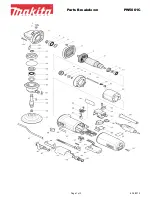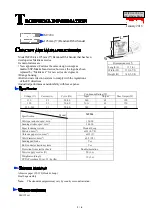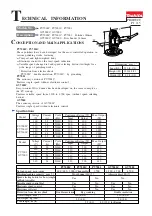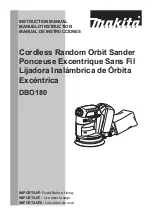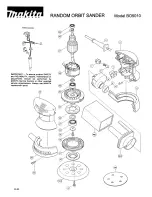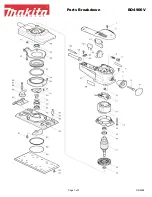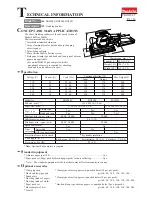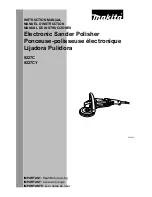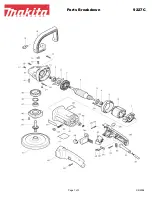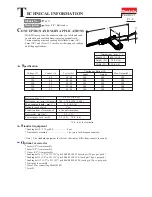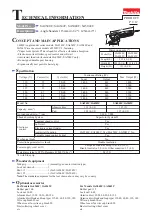
5
OPERATION
OPERATING THE SANDER (Fig. 4 & 5)
Follow these steps to operate the sander.
1.
Secure the work piece to prevent it from moving under
the sander.
Unsecured work pieces could be thrown towards the
operator, causing injury.
Keep your head away from the sander and the sanding
area. Your hair could be drawn into the sander causing
serious injury.
2.
Place the sander on the work piece so that all of the
sanding pad surface is in contact with the work piece.
To avoid damaging the motor from overheating, be careful
not to let your hand cover the air vents.
3.
Turn on the sander and move it slowly over the work
piece.
Hold the sander in front and away from you, keeping it clear
of the work piece. Start sander and let the motor build to its
maximum speed, then gradually lower the sander onto the
work piece. Move the sander slowly across the work piece
using small circular motions. See Figure 4
.
Do not force. The weight of the unit supplies adequate
pressure, so let the sanding sheet and sander do the work.
Applying additional pressure only slows the motor, rapidly
wears sanding sheet and greatly reduces sander speed.
Excessive pressure will overload the motor causing possible
damage from motor overheating and can result in inferior
work. Any finish or resin on wood may soften from the
frictional heat. Do not allow sanding on one spot too long as
the sander’s rapid action may remove too much material,
making the surface uneven.
Fig. 4
Extended periods of sanding may tend to overheat the motor.
If this occurs, turn sander off and wait until the sanding pad
comes to a complete stop, then remove it from work piece.
Remove your hand from vent area, remove sanding sheet,
then with your hand removed from vent area, turn sander on
and run it free without a load to cool motor.
For detail sanding such as corners and crevices, use the tip
of the sanding pad with small back and forth motions, as
shown in figure 5.
Fig. 5
EMPTYING THE DUST BAG (Fig. 6)
For more efficient operation, empty the dust bag when it is
no more than half full. This will permit the air to flow through
the bag better. Always empty and clean the dust bag
thoroughly upon completion of a sanding operation and
before placing the sander in storage.
Collected sanding dust from sanding surface coatings
such as polyurethanes, linseed oil, etc. can self-ignite in
your sander dust bag or elsewhere and cause fire. To
reduce the risk of fire always empty your dust bag
frequently (10-15 minutes) while sanding and never store
or leave a sander without totally emptying its dust bag.
Also follow the recommendations of the coatings
manufacturers.
Follow these steps to empty the dust bag.
1.
Unplug the sander.
Failure to unplug the tool could result in accidental
starting causing possible serious injury.
2.
Remove the dust bag from the sander.
3.
Shake out the dust.
4.
Re-attach the dust bag to the sander.
WARNING:
WARNING:
CAUTION:
WARNING:
WARNING:
Page








